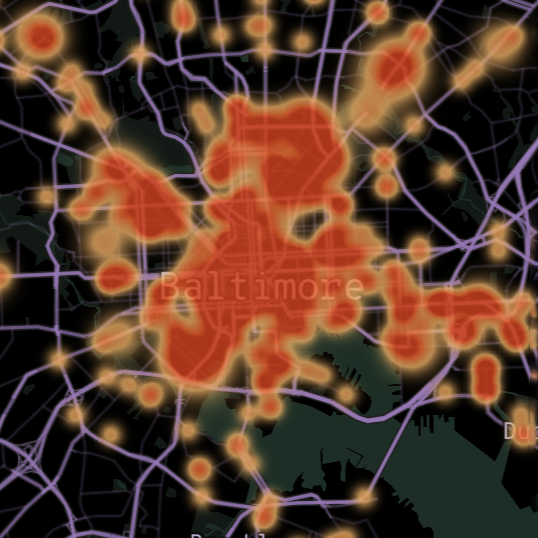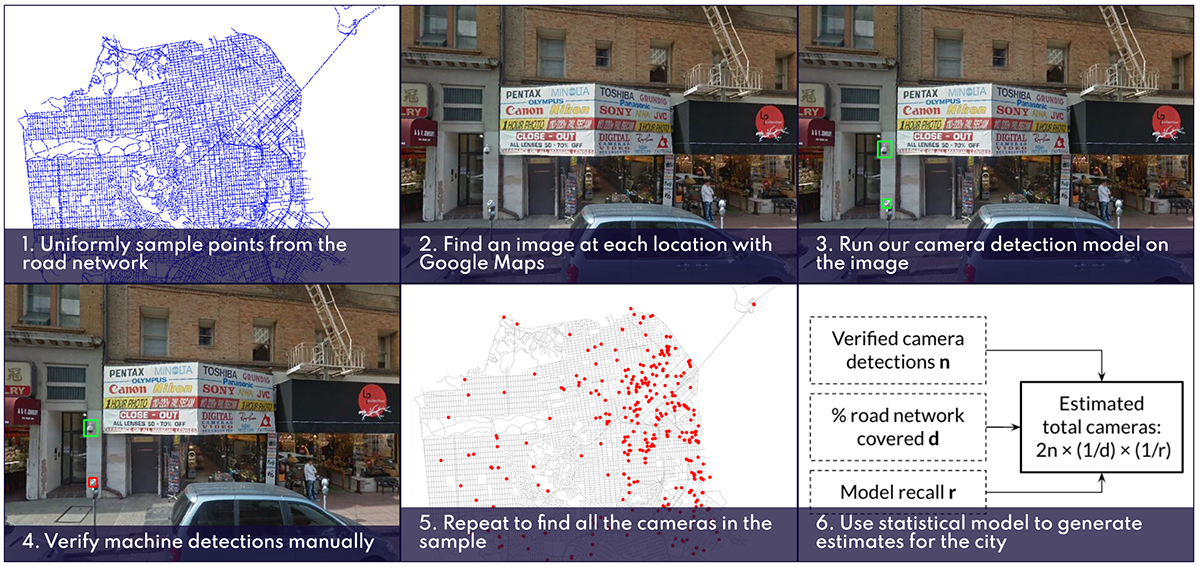

Using computer vision to estimate the prevalence and placement of cameras in cities around the world.

Surveillance cameras are everywhere. Governments, businesses and homeowners all use cameras to detect and potentially deter crime. But advances in facial recognition, predictive policing, and hacking make cameras an increasing threat to our privacy. Using computer vision, we analyzed 1.6 million images to estimate the number of cameras in 10 large U.S. cities and 6 other major cities around the world. We found large differences in camera density between cities, ranging from 0.1 cameras/km in Seattle to 0.9 cameras/km in Seoul. We also found that cameras are concentrated in commercial and industrial zones, and in majority-minority neighborhoods, even after adjusting for zone category. These results point to the potential disparate impacts of surveillance technology on communities of color.
Our statistical estimation procedure involves three key steps. First, we built a computer vision model to detect cameras from street view images. Second, we run our camera detection algorithm on a random sample of 100,000 images in each of the 16 cities we analyzed. All positive camera detections are then reviewed by human experts to ensure the accuracy of our detections. Finally, by combining the geometry of the camera angle, the road network, and building footprints, we estimated the prevalence and placement of cameras in the entire city.

For more information, visit our Surveilling Surveillance project website.